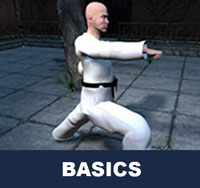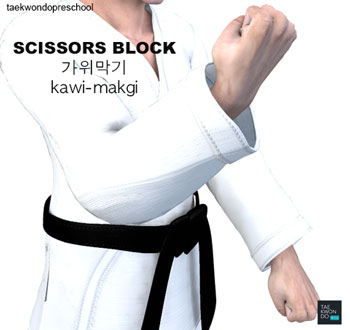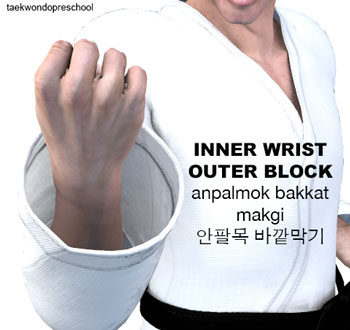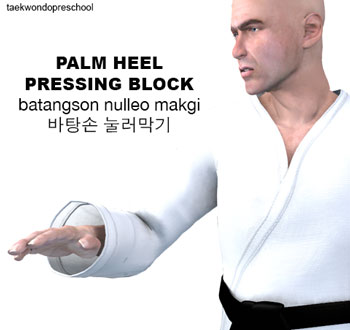Taekwondo 태권도Taekwondo Preschool
Promotion from one geup to the next can proceed rapidly in some schools, since schools often allow geup promotions every two, three, or four months. Students of geup rank learn the most basic techniques first, and then move on to more advanced techniques as they approach first dan. Many of the older and more traditional schools often take longer to allow students to test for higher ranks than newer, more contemporary schools, as they may not have the required testing intervals. View Taekwondo belt levels »

Discipline
When you reach senior belt you are expected to guide the junior belts when they are beginning Taekwondo such as showing by example.
In Martial Arts training, there are different expressions of philosophy and discipline applied to the teaching.
In its original sense, discipline is systematic instruction intended to train a person, sometimes literally called a disciple, in a craft, trade or other activity, or to follow a particular code of conduct or "order". Often, the phrase "to discipline" carries a negative connotation. This is because enforcement of order–that is, ensuring instructions are carried out–is often regulated through punishment.
Discipline is a course of actions leading to a greater goal than the satisfaction of the immediate. A disciplined person is one that has established a goal and is willing to achieve that goal at the expense of his or her immediate comfort.
Discipline is the assertion of willpower over more base desires, and is usually understood to be synonymous with self control. Self-discipline is to some extent a substitute for motivation, when one uses reason to determine the best course of action that opposes one's desires. Virtuous behavior is when one's motivations are aligned with one's reasoned aims: to do what one knows is best and to do it gladly. Continent behavior, on the other hand, is when one does what one knows is best, but must do it by opposing one's motivations. Moving from continent to virtuous behavior requires training and some self-discipline.
Self-discipline can be defined as the ability to motivate oneself in spite of a negative emotional state. Qualities associated with self-discipline include willpower, hard work, and persistence.
Self-discipline is the product of persisted willpower. Whereas willpower is the strength and ability to carryout a certain task, self-discipline is the ability to use it routinely and even automatically (as if through reflex). An analogy for the relationship between the two might be defined as follows: Where willpower is the muscle, self-discipline is the structured thought that controls that muscle. In most cultures, it has been noted that self-discipline is the ultimate path towards success.

Training Safety Precautions
Starting with coloured belts taekwondo students must learn Breaking ( 격파 gyeokpa ). As they progress through the ranks, the breaks they perform increase in difficulty as do the number of boards. Wooden boards are the most common breaking item in most martial arts.
There are safety concerns with taekwondo breaking ( 격파 gyeokpa ), so one should seek out a certified Master Instructor ( 사범님 sabeomnim ). There are many small bones of the foot ( 발 bal ) and hand ( 손 son ) which need to be very carefully and slowly conditioned for safety. Repeated damage to the extensor capsules of the knuckles can lead to long term problems with dexterity. View Breaking ( 격파 gyeokpa ) »
* Please see a certified Master Instructor ( 사범님 sabeomnim ) for training. Proper guidance and instructions are needed to ensure safe training.

Taekwondo Basics
Here is where you can learn more about Taekwondo 태권도. Knowing the fundamental basics is very important for your learning path as you build your skills and knowledge. There are certain rules that need to be followed to show respect to the master ( 사범님 sabeomnim ), the instructors ( 교사님 gyosannim ), other practitioners and to the martial arts. They vary between schools but many have similar rules and guidelines. For more information View Taekwondo Basics »
There are five tenets defined in the International Taekwondo Federation (ITF) and several more in World Taekwondo (WT).
Indomitable spirit ( 백절불굴 baekjul-boolgool ): "To have indomitable spirit means to have the courage to stand up for what you believe in, no matter what odds you are up against, and to always give 100% effort in whatever you do." View Taekwondo Tenets »
RESOURCES
This article uses material from the Wikipedia article "Discipline" which is released under the Creative Commons Attribution-Share-Alike License 3.0.





















